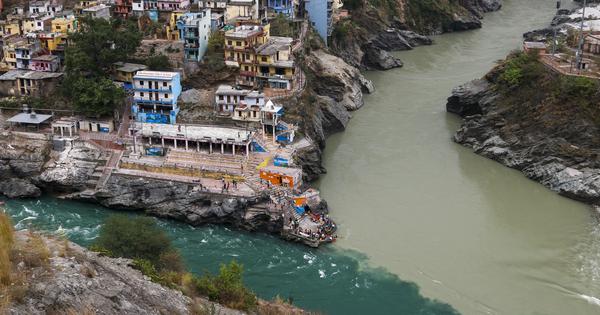A recent study highlights groundwater’s critical role in sustaining the Ganga River’s flow, contrary to common perceptions.
The Ganga River, which flows through the Indo-Gangetic Plain, is vital for agriculture and industry, supporting a large population. While glaciers and snowmelt are often cited as primary contributors to its flow, a recent study indicates that groundwater plays a more significant role in sustaining the river, particularly in its lower reaches. The research, published in Hydrological Processes, marks the first comprehensive isotope study revealing that groundwater aquifers are the main source of the Ganga’s summer flow, as noted by study author Abhayanand Singh Maurya, a professor at the Indian Institute of Technology, Roorkee.
During his research in Rishikesh in 2011, Maurya discovered that glacier melt accounted for only about 32% of the total flow of the river. This revelation prompted him to investigate the source of the remaining water, especially in the plains where the river’s discharge is significantly higher than at its origin. The Ganga, originating from the Gangotri glacier in the western Himalayas, is crucial for various ecosystems, including wetlands and fish populations.
Another study by IIT Indore and international collaborators highlighted that the Gangotri glacier has experienced a 10% reduction in its snowmelt flow over the past four decades due to climate change. This raises concerns about the future of rivers reliant on glacial melt. However, Maurya’s findings underscore that groundwater recharge is essential for maintaining river flow. The research revealed that groundwater discharge increases the Ganga’s volume by approximately 120% compared to its initial flow at the glacier’s origin.
To conduct the study, Maurya and his team collected water samples from 32 locations before the Indian summer monsoon in 2019. These samples ranged from Devprayag, where the Alaknanda and Bhagirathi rivers converge to form the Ganga, to near its mouth at Howrah. The team analyzed the oxygen and hydrogen isotopic ratios in the samples, identifying variations caused by evaporation and the mixing of tributary waters and groundwater discharge from aquifers. Maurya emphasized that from the point the Ganga reaches the plains, it becomes predominantly groundwater-fed along a 1,200-kilometre stretch, which is densely populated and economically significant.
Although Maurya’s study presents new insights, some experts argue that the importance of groundwater to the Ganga’s flow has been recognized for years. Abhijit Mukherjee, a geology professor at IIT Kharagpur, noted that numerous studies since 2006 have demonstrated that groundwater significantly contributes to the Ganga’s flow. He provided specific figures showing that in Varanasi, groundwater constitutes about 52% to 58% of the river’s flow, increasing to as much as 75% in parts of West Bengal.
Environmentalists like Ravi Chopra acknowledge that while glaciers contribute to the river’s flow, they are not the primary source throughout its entire length. Glacial melt is more pronounced during summer, but the main flow derives from rainwater that seeps through the hills surrounding the Ganga watershed. Ruchi Badola, dean at Wildlife Trust India, emphasized the importance of groundwater conservation in their action plans, highlighting efforts to recharge groundwater sources.
Moreover, Maurya’s study brings attention to the significant loss of water due to evaporation in the river’s middle plain region, where over half of its water is lost. This issue becomes increasingly concerning, given recent research indicating a declining trend in the Ganga’s overall water flow, with historical drought patterns revealing that the river basin has faced unprecedented dry spells in recent decades.








